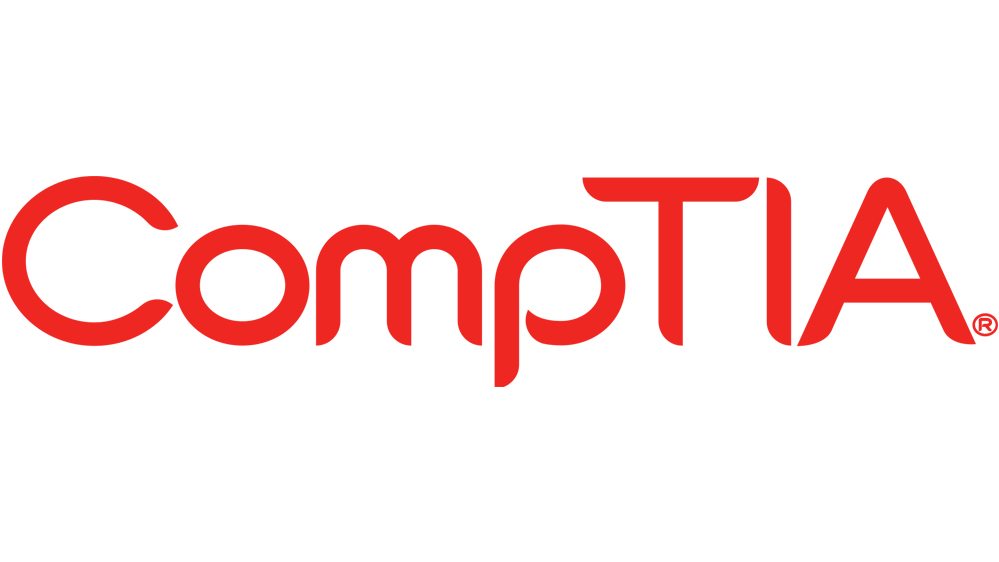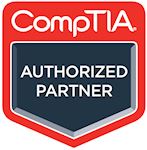CompTIA : CompTIA Network+
CompTIA Network + | N10-008 Course | Accredited and Professional (Exam included)
IT Certify
Summary
Limited Special offer ends 30th April 2024**
- Exam(s) / assessment(s) is included in price
- Tutor is available to students
Add to basket or enquire
Overview
CompTIA Network+ N10-008 (Accredited and Professional)
The course includes:
CompTIA Network+ exam - Worth £240
Unlimited Mock Test support - We will get you up to 90% in our Mock Tests so that when you take the real exam you will pass (80% needed in the real exam)
Mock Test Teacher - Our Mock Test teacher will provide personalised feedback after each Mock Test
Account Manager - To answer any questions or queries you may have
Gain knowledge for on-the-job IT skills and information to pass the new CompTIA Network+ N10-008 certification exam. IT Certify are a CompTIA authorised partner. This is the full and comprehensive course with 46 hours of interactive e-learning with full customer support.
The CompTIA Network+ course teaches the skills required to implement enterprise-level wired and wireless network solutions, identify and troubleshoot network performance issues and harden networks against threats to mitigate security vulnerabilities.
The CompTIA Network+ course forms the second level in your IT career and is essential in proving your skills in building and protecting Networks.
Gain knowledge for on-the-job IT skills and information to pass the CompTIA Network+ N10-008 certification exam. This course teaches the skills required to implement enterprise-level wired and wireless network solutions, identify and troubleshoot network performance issues and harden networks against threats to mitigate security vulnerabilities.
What you will learn from CompTIA Network+ N10-008:
Compare OSI Model Network Functions
Describe network topologies and types
Deploy Ethernet Cabling and Ethernet Switching
Troubleshoot Ethernet Networks
Explain IPv4 Addressing Support
IPv4 and IPv6 Networks
Configure and Troubleshoot Routers
Explain Transport Layer Protocols
Describe Network Services
Explain Network Applications
Ensure Network Availability
Describe Common Security Concepts
Support and Troubleshoot Secure Networks
Deploy and Troubleshoot Wireless Networks
Compare WAN Links and Remote Access Methods
Explain Organizational and Physical Security Concepts
Explain Disaster Recovery and High Availability Concepts
Apply Network Hardening Techniques
Summarize Cloud and Datacenter Architecture
CompTIA Network+ N10-008 Table of Contents (Full)
Module 0 - Course introduction
CompTIA Network+: 0.1 Instructor Intro
CompTIA Network+: 0.2 Course Overview
Module 1 - Networking Fundamentals
CompTIA Network+: 1.1 Intro to Networking
CompTIA Network+: 1.1.1 Activity: Creating a Network
CompTIA Network+: 1.2 Common Terminology
CompTIA Network+: 1.2.1 Activity: Examining Ports and Sockets
CompTIA Network+: 1.3 OSI Model
CompTIA Network+: 1.4 DoD Model
CompTIA Network+: 1.4.1 Activity: Examining Network Layers
CompTIA Network+: 1.5 TCP, UDP, IP
CompTIA Network+: 1.5.1 Activity: Examining TCP
CompTIA Network+: 1.5.2 Activity: Examining UDP
CompTIA Network+: 1.5.3 Activity: Examining IP
CompTIA Network+: 1.6 ICMP, IGMP, ARP
CompTIA Network+: 1.6.1 Activity: Examining ICMP
CompTIA Network+: 1.6.2 Activity: Examining ARP
CompTIA Network+: 1.6.3 Activity: Examining IGMP
CompTIA Network+: 1.7 Network Topologies
CompTIA Network+: 1.8 Network Types
CompTIA Network+: 1.9 Part 1: Network Characteristics
CompTIA Network+: 1.9 Part 2: Network Characteristics
CompTIA Network+: 1.10 Module 1 outro
Module 2 - Cables and Connectors
CompTIA Network+: 2.1 Ethernet Standards
CompTIA Network+: 2.2 Copper Cable Types
CompTIA Network+: 2.3 Fiber Optic Cable Types
CompTIA Network+: 2.4 Connector Types
CompTIA Network+: 2.4.1 Activity: Selecting the Right Cable
CompTIA Network+: 2.5 Media Converters and Transceivers
CompTIA Network+: 2.6 Cable Management
CompTIA Network+: 2.7 Module 2 Outro
Module 3 - Internet Protocol (IP)
CompTIA Network+: 3.1 IPv4 Basics
CompTIA Network+: 3.2 IP Packet and Interface Types
CompTIA Network+: 3.2.1 Activity: Configuring Client IP Settings
CompTIA Network+: 3.3 Binary Numbering System
CompTIA Network+: 3.4 Classful and Classless Addressing
CompTIA Network+: 3.5 Understanding CIDR Notation
CompTIA Network+: 3.6 IPv4 Subnetting Method
CompTIA Network+: 3.7 Verifying with Binary
CompTIA Network+: 3.8 Finding Subnet IDs
CompTIA Network+: 3.8.1 Activity: Subnetting a Class C Network
CompTIA Network+: 3.9 The Delta in Action
CompTIA Network+: 3.9.1 Activity: Subnetting With the Delta
CompTIA Network+: 3.10 Subnetting Based on Hosts
CompTIA Network+: 3.11 Subnetting in Other Octets
CompTIA Network+: 3.12 Supernetting
CompTIA Network+: 3.12.1 Activity: Supernetting
CompTIA Network+: 3.13 IPv6
CompTIA Network+: 3.14 IPv4 - IPv6 Transition Mechanisms
CompTIA Network+: 3.15 Module 3 Outro
Module 4 - Layer 7 Protocols
CompTIA Network+: 4.1 Remote Control Protocols
CompTIA Network+: 4.2 File Sharing Protocols
CompTIA Network+: 4.3 Web Protcols
CompTIA Network+: 4.4 Email Protocol
Certification
CompTIA Network+
Course media
Description
CompTIA Network+ N10-008 Table of Contents (Continued...)
Module 5 - Network Services
CompTIA Network+: 5.1 DHCP
CompTIA Network+: 5.1.1 Activity: Configuring DHCP
CompTIA Network+: 5.1.2 Activity: Configuring a DHCP Relay Agent
CompTIA Network+: 5.2 DNS
CompTIA Network+: 5.2.1 Activity: Configuring DNS - Part 1
CompTIA Network+: 5.2.2 Activity: Configuring DNS - Part 2
CompTIA Network+: 5.3 NTP
CompTIA Network+: 5.4 Corporate and Datacenter Network Architecture
CompTIA Network+: 5.5 Cloud Concepts and Connectivity Options
CompTIA Network+: 5.6 Module 5 Outro
Module 6 - Networking Devices
CompTIA Network+: 6.1 Introductory Concepts
CompTIA Network+: 6.2 Repeaters and Hubs
CompTIA Network+: 6.2.1 Activity: Connecting Devices with a Hub
CompTIA Network+: 6.3 Bridges and Switches
CompTIA Network+: 6.3.1 Activity: Connecting Devices with a Switch
CompTIA Network+: 6.4 Routers and Multilayer Switches
CompTIA Network+: 6.5 Security Devices
CompTIA Network+: 6.6 Modems
CompTIA Network+: 6.7 Module 6 Outro
Module 7 - Networked Devices
CompTIA Network+: 7.1 IP Devices
CompTIA Network+: 7.2 IoT
CompTIA Network+: 7.2.1 Activity - Programming IoT Devices
CompTIA Network+: 7.3 ICS/SCADA
CompTIA Network+: 7.4 Module 7 Outro
Module 8 - Routing and Bandwidth Management
CompTIA Network+ 8.1 Routing Basics
CompTIA Network+ 8.1.1 Activity: Configuring Static Routes
CompTIA Network+ 8.2 Packet Delivery on the Same Network
CompTIA Network+ 8.3 IP Routing Across a Single Router
CompTIA Network+ 8.4 IP Routing Across Multiple Hops
CompTIA Network+ 8.4.1 Activity: Static Routes - CHALLENGE
CompTIA Network+ 8.5 Route Selection
CompTIA Network+ 8.6 RIP
CompTIA Network+ 8.6.1 Activity: Configuring RIP - CHALLENGE
CompTIA Network+ 8.7 OSPF
CompTIA Network+ 8.8 EIGRP
CompTIA Network+ 8.9 BGP
CompTIA Network+ 8.10 NAT/PAT
CompTIA Network+ 8.11 Bandwidth Management (with Module 8 Outro)
Module 9 - Ethernet Switching
CompTIA Network+ 9.1 Ethernet Basics
CompTIA Network+ 9.2 Switching Overview
CompTIA Network+ 9.2.1 Activity: Examining a MAC Table
CompTIA Network+ 9.3 VLANs
CompTIA Network+ 9.3.1 Activity: Creating VLANs
CompTIA Network+ 9.4 VLAN Trunking
CompTIA Network+ 9.4.1 Activity: Configuring VLAN Trunking
CompTIA Network+ 9.5 VLAN Routing
CompTIA Network+ 9.5.1 Activity: Configuring VLAN Routing
CompTIA Network+ 9.6 Contention Management
CompTIA Network+ 9.7 Switchport Configuration (with Module 9 Outro)
Module 10 - Wireless Technologies
CompTIA Network+ 10.1 Wireless Overview
CompTIA Network+ 10.2 Radio Basics
CompTIA Network+ 10.3 Modulation
CompTIA Network+ 10.4 Wi-Fi Standards
CompTIA Network+ 10.5 Antennas
CompTIA Network+ 10.6 Wi-Fi Service Sets
CompTIA Network+ 10.7 Wi-Fi Security
CompTIA Network+ 10.8 Cellular
Module 11 Network Performance
CompTIA Network+ 11.1 Monitoring Performance
CompTIA Network+ 11.2 Common Metrics
CompTIA Network+ 11.2.1 Activity: Examining Interface Statistics
CompTIA Network+ 11.3 SNMP
CompTIA Network+ 11.4 Netflow
CompTIA Network+ 11.5 Network Security Monitoring (with Module 11 Outro)
Module 12 High Availability and Disaster Recovery
CompTIA Network+ 12.1 HA and DR Concepts
CompTIA Network+ 12.2 High Availability Mechanisms
CompTIA Network+ 12.3 Disaster Recovery Mechanisms
CompTIA Network+ 12.4 Facility and Infrastructure Support (with Module 12 Outro)
Module 13 Organizational Documents
CompTIA Network+ 13.1 Plans and Procedures
CompTIA Network+ 13.2 Security Policies
CompTIA Network+ 13.3 Loss Prevention
CompTIA Network+ 13.4 Common Agreements
CompTIA Network+ 13.5 Common Documentation
CompTIA Network+ 13.6 Structured Cabling - MDF and IDF
CompTIA Network+ 13.7 Horizontal and Vertical Cabling
CompTIA Network+ 13.7.1 Activity - Implementing Cable Management
CompTIA Network+ 13.8 Labeling
CompTIA Network+ 13.9 Surveys and Assessments (with Module 13 Outro)
Module 14 Network Security
CompTIA Network+ 14.1 Common Security Concepts
CompTIA Network+ 14.2 Common Attack Types
CompTIA Network+ 14.3 Spoofing-based Attacks
CompTIA Network+ 14.4 Hijacking and MITM
CompTIA Network+ 14.5 Social Engineering
CompTIA Network+ 14.6 Network Segmentation
CompTIA Network+ 14.7 Private VLANs
CompTIA Network+ 14.8 Single Organization Authentication
CompTIA Network+ 14.9 Extending Authentication
CompTIA Network+ 14.10 Authorization
CompTIA Network+ 14.11 Network Device Hardening
CompTIA Network+ 14.12 Wireless Security
CompTIA Network+ 14.13 Remote Access Security
CompTIA Network+ 14.14 IoT Security
CompTIA Network+ 14.15 Physical Security (with Module 14 Outro)
Module 15 Network Troubleshooting
CompTIA Network+ 15.1 Troubleshooting Methodology
CompTIA Network+ 15.2 Physical Connectivity Issues
CompTIA Network+ 15.3 Hardware Testing Tools
CompTIA Network+ 15.3.1 Activity - Testing an Ethernet Cable
CompTIA Network+ 15.3.2 Activity - Crimping on an RJ-45 Connector
CompTIA Network+ 15.3.3 Activity - Punching Down Twisted Pair
CompTIA Network+ 15.3.4 Activity - Using a Telephone Toner
CompTIA Network+ 15.4 Understanding Electricity
CompTIA Network+ 15.4.1 Activity - Checking Cable Continuity
CompTIA Network+ 15.4.2 Activity - Testing DC Voltage
CompTIA Network+ 15.4.3 Activity - Testing AC Voltage
CompTIA Network+ 15.5 Twisted Pair Pinout Problems
CompTIA Network+ 15.6 Twisted Pair Termination Problems
CompTIA Network+ 15.7 Repairing Damaged Twisted Pair Cable
CompTIA Network+ 15.8 Fiber Optic Connectivity Issues
CompTIA Network+ 15.8.1 Activity - Testing a Fiber Optic Cable
CompTIA Network+ 15.9 Common Port Problems
CompTIA Network+ 15.9.1 Working with Ports and Their Devices
CompTIA Network+ 15.10 Common Software Testing Tools
CompTIA Network+ 15.10.1 Activity - Scanning for Open Ports
CompTIA Network+ 15.11 Common Command Line Utilities
CompTIA Network+ 15.12 Troubleshooting Basic IP Networking Issues
CompTIA Network+ 15.13 Common Switching Issues
CompTIA Network+ 15.14 Switching Test Tools and Techniques
CompTIA Network+ 15.15 Common IP Routing Issues
CompTIA Network+ 15.16 Wi-Fi Access Point Issues
CompTIA Network+ 15.17 Wirelss Interference
CompTIA Network+ 15.17.1 Activity - Using a Spectrum Analyzer
CompTIA Network+ 15.18 Wireless Antenna Issues
CompTIA Network+ 15.18.1 Activity - Configuring a Wi-Fi Router
CompTIA Network+ 15.19 WAP Placement Strategies
CompTIA Network+ 15.20 Infrastructure Service Issues (DHCP)
CompTIA Network+ 15.21 Infrastructure Service Issues (DNS)
CompTIA Network+ 15.22 Infrastructure Service Issues (NTP)
CompTIA Network+ 15.23 Fireall / ACL Issues
CompTIA Network+ 15.24 VPN Issues
CompTIA Network+ 15.25 Additional Network Security Troubleshooting and Tips
CompTIA Network+ 15.26 Advanced Networking Issues
CompTIA Network+ 15.27 Troubleshooting Server Services (with Module 15 Outro)
CompTIA Network+ N10-008 Course Outro
Who is this course for?
Anyone with an interest in IT
Requirements
Just the desire and commitment to learn
Career path
Junior Network Support
Network Field Technician
Junior System Engineer
1st Line Support
2nd Line Support
Network Support Specialist
Network Analyst
System Engineer
Helpdesk Technician
IT Support Analyst
Questions and answers
Reviews
Currently there are no reviews for this course. Be the first to leave a review.
Legal information
This course is advertised on reed.co.uk by the Course Provider, whose terms and conditions apply. Purchases are made directly from the Course Provider, and as such, content and materials are supplied by the Course Provider directly. Reed is acting as agent and not reseller in relation to this course. Reed's only responsibility is to facilitate your payment for the course. It is your responsibility to review and agree to the Course Provider's terms and conditions and satisfy yourself as to the suitability of the course you intend to purchase. Reed will not have any responsibility for the content of the course and/or associated materials.





